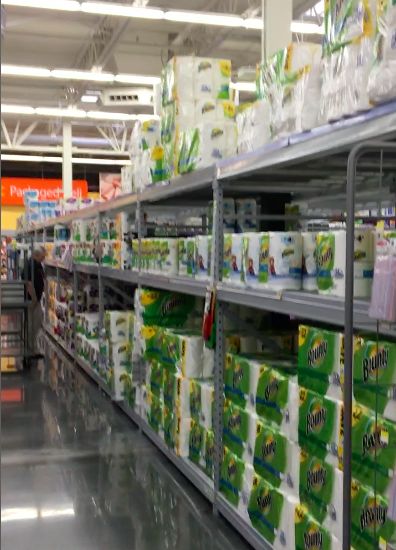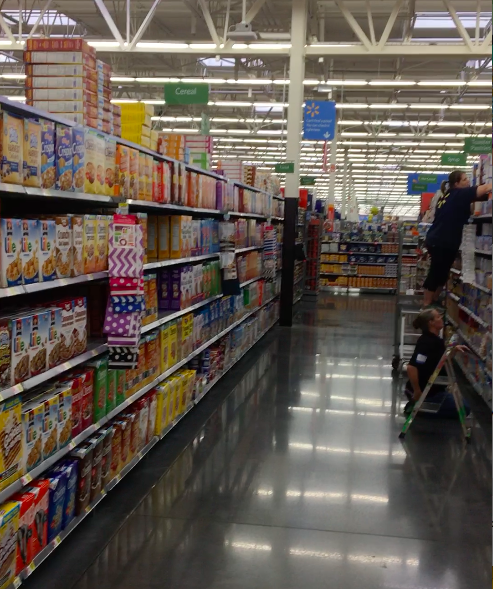This POC was very interesting. This retail customer wanted way-finding in the ‘high shelf’ shopping areas, but if the client moves into the “soft-area’s” where things move around use zone analytics. A ‘blue dot’ experience might be required if the customer came to the store looking for a specific item. If not their device might just provide analytics on the shopping experience and when used at checkout would provide identify so that other visits can be compared and contrasted against others to extract value from the experience. We were told if they could prove to a vendor that an ‘end cap’ actually sold 10x the same product on the shelf, they could charge a lot more for that end-cap. This had been tried by using time lapse camera’s and manually by high school students, but to no avail.
This customer understood that Mist location deployed as infrastructure could build multiple use cases both important to their Marketing folks and the people responsible for day to day operations on-site. This was previously impossible as each use case would be a project unique to itself.
Customer (store has a popular mobile app)
- Use a ‘super beacon’ at the entrances to wake up the app and let customer know about new things
- Help way-find the customer to what they want to see
- Interested in the ‘pls get me an associate’ app
Retailer
- The associates app they use scan’s barcodes to retrieve pricing and inventory – now they wanted to add x,y so they can ‘crowdsource’ the location of mis-placed pallets
- Panic button – workplace safety
The best part is when I would get text messages from the customer who ran his own testing and would send me cool messages like this.
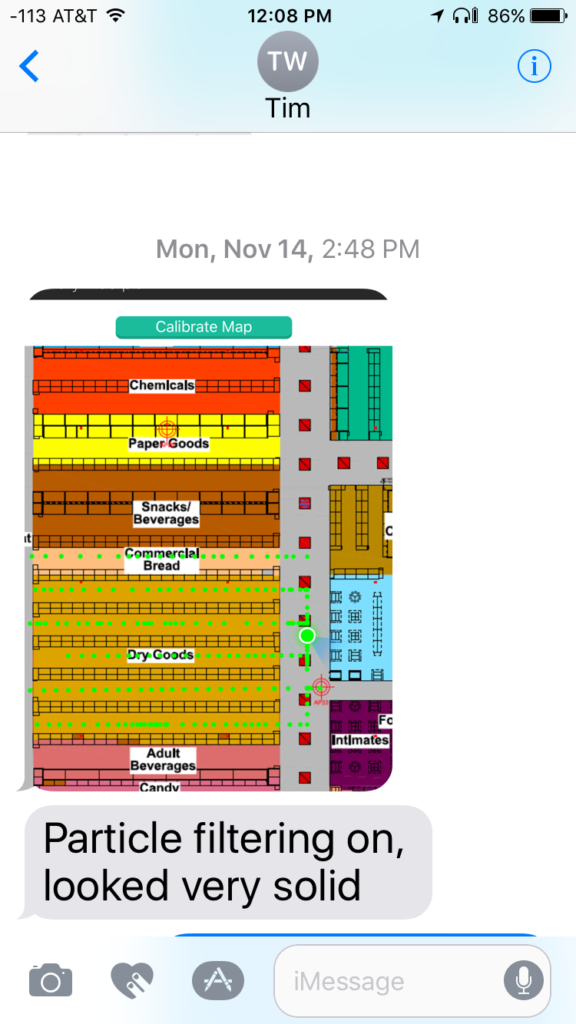
That made all the hours worth it.
here is how we did it:
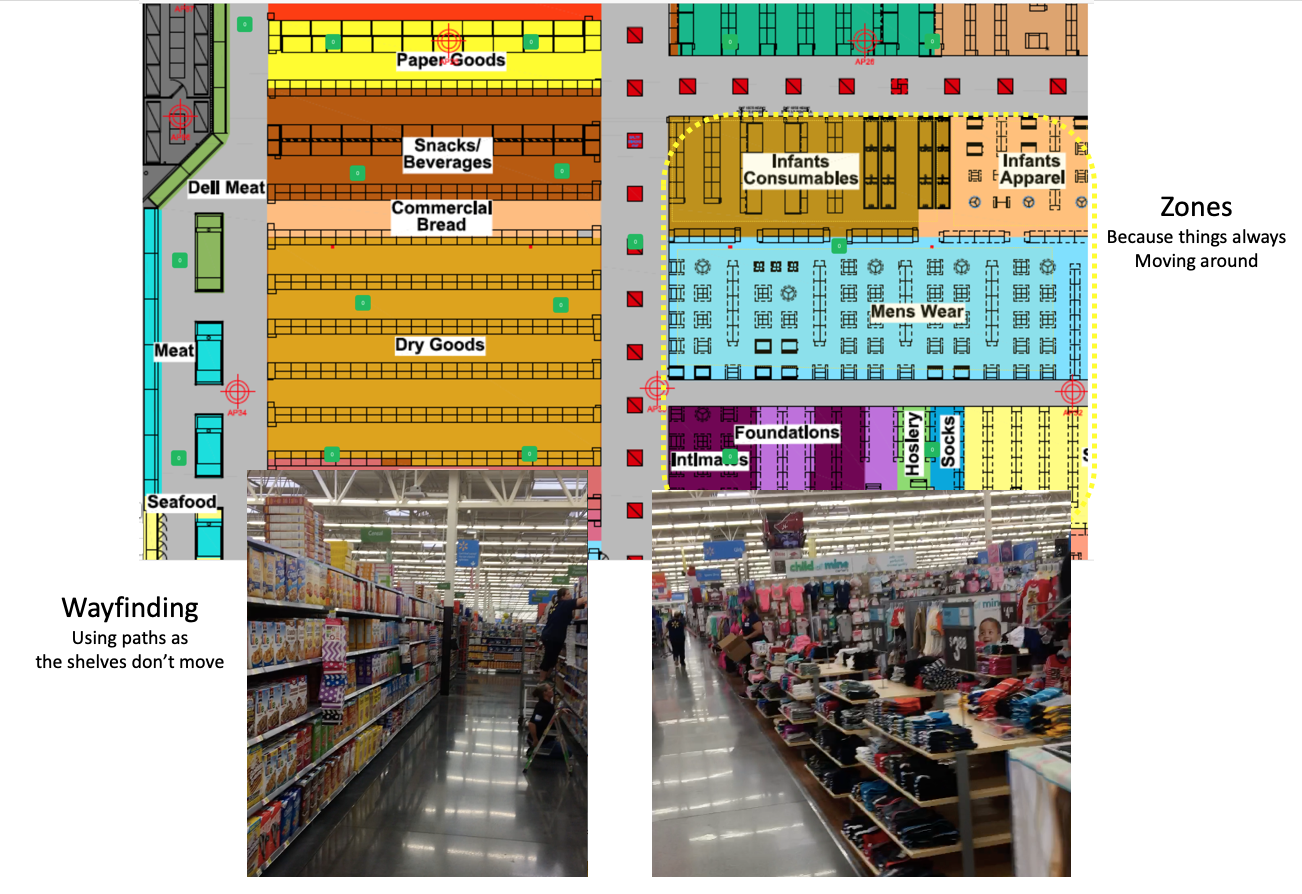
Here are how the way-finding paths are setup. All the main concrete paths are the major routes as well as the aisles where the shelved food would be. But in the softer spaces like infants apparel or mens clothes, those items are hung on racks with wheels that move around all the time. So when in those area’s knowing the customers x,y was important for zone analytics to understand their shopping habits. Also if they implement the ‘ask for an associate’ feature, maybe to see if they had a specific shoe size in the back.
This customer realized as they understood the power of this new technology the use cases were endless and many lessons were learned.
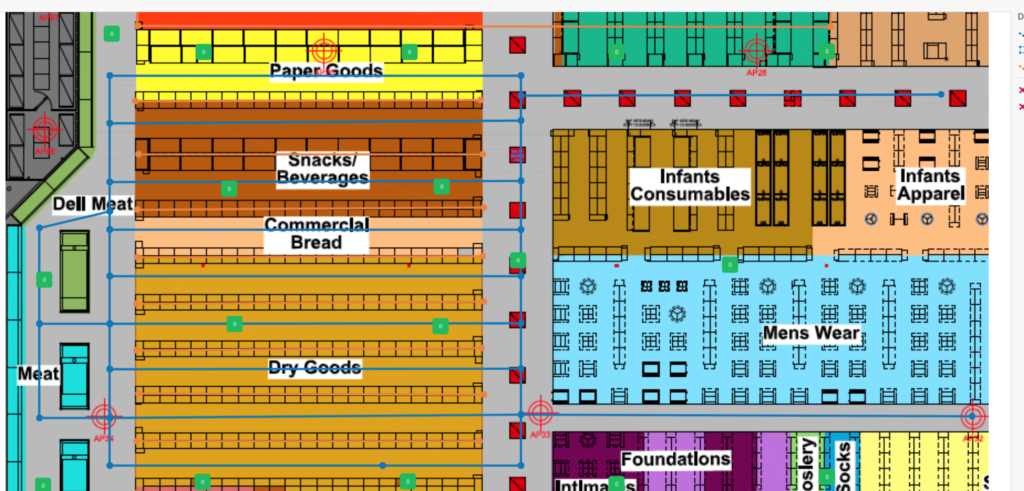
Here are the zones. I had to use the ‘image transparency’ to try and bring out the zones as this image was very colorful. Although zone information can be seen on the Mist platform, most customers use webhooks to stream the data to their existing systems which are already setup to process this kind of data
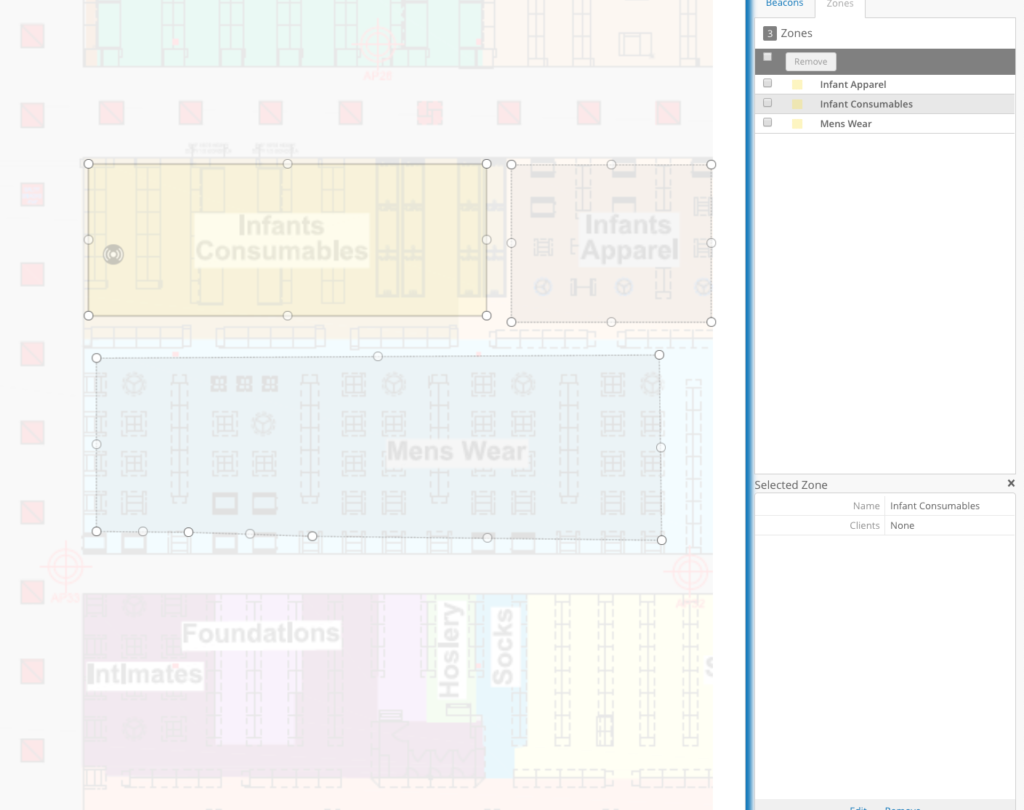
AP’s were mounted in different ways. Where they could use structural poles they would. Where they needed to drop threaded rod they did that too. We came to learn that 12 feet was a very good height to cover this kind of space. And with the BT11 mounted against that pole, we would see some ‘beam reflection’ since the whole store was covered the Mist Machine learning engine would continuously be optimizing and those poles would not be a factor. Daisy Chaining was used in several parts of the store where it made sense to save switch ports.
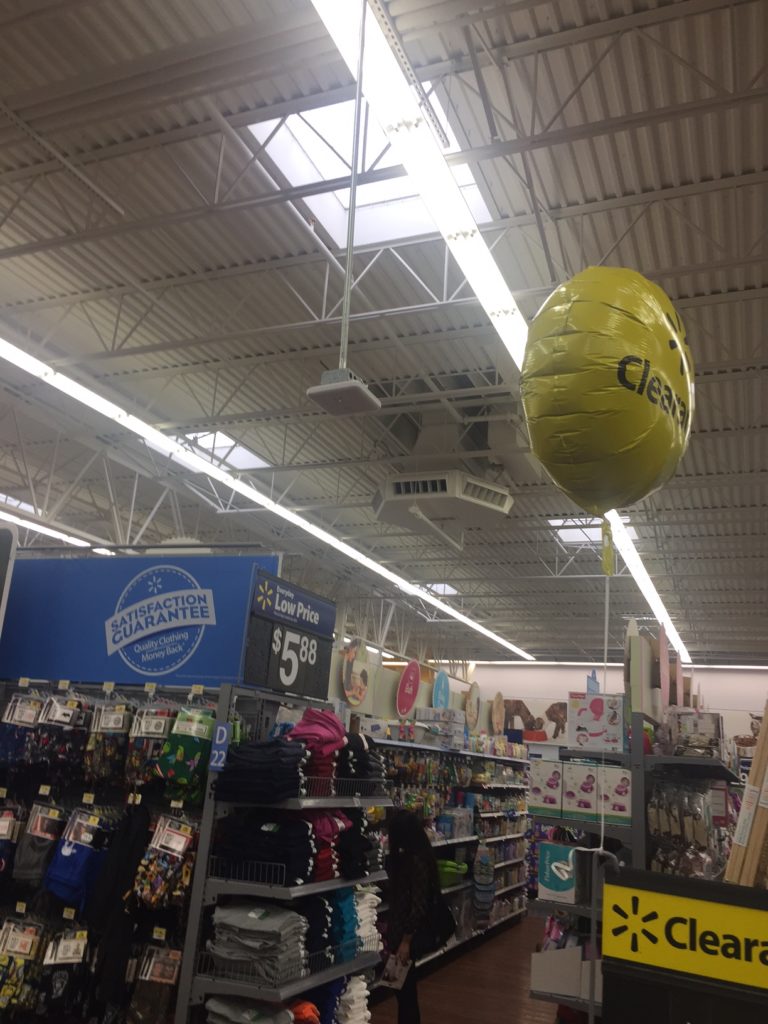
![]()
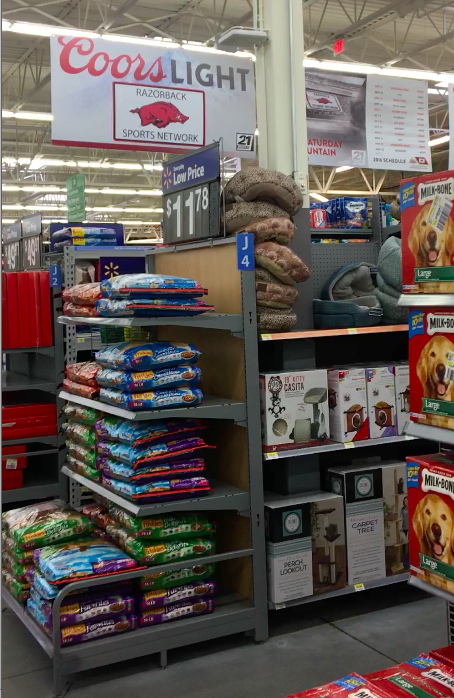

And you can use the ruler to check the distance between AP’s. Always a useful “quick check.”
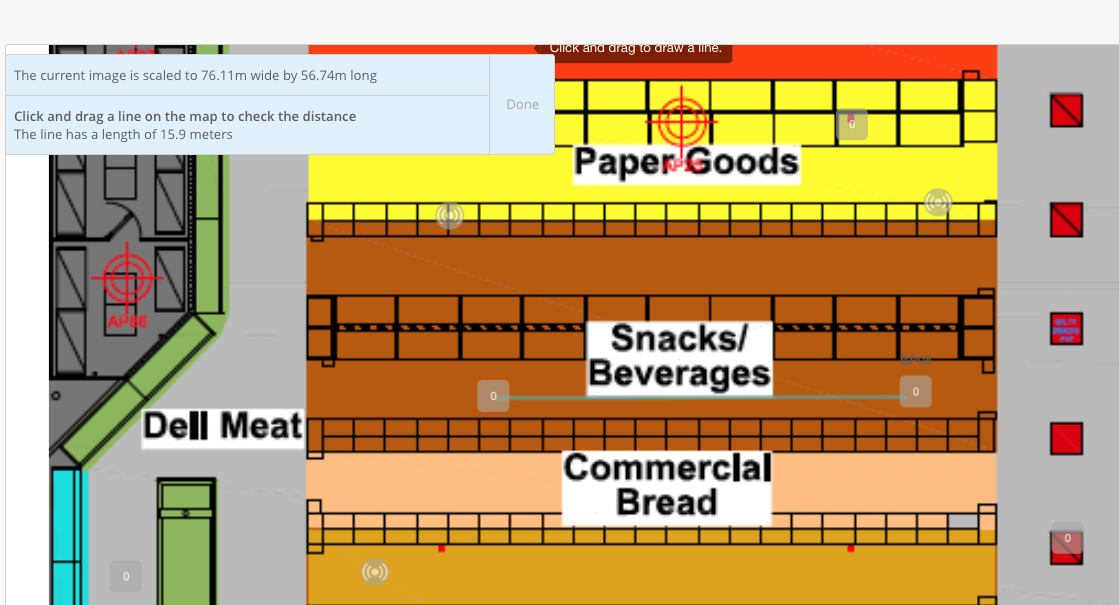
One of the learnings was when doing large shelve area’s we needed AP’s hung with threaded rod over the center of an aisle, approximately every 2 aisles as shown below. We used 12′ as a mounting height as you could get ‘shadowed’ when the top shelves are used. The softer areas were a bit easier and they tried to make use of existing support columns to mount. In these area’s the SDK dot would ‘leave the path’ and provide x,y coordinates to the back end and the zone analytics engine would process for shopping habits. You can see the ‘rubber band’ principle was used to keep most customers inside the ‘rubber band’ of the outer AP’s.

Another learning here was we originally designed for 10 feet mounting. That looked good on paper, but when we got to the store we would see BT11’s buried behind product. In this case it was paper towels which don’t absorb much bluetooth, but imagine if that were cans of diet coke 🙂 . Hence we moved to 12 feet.
